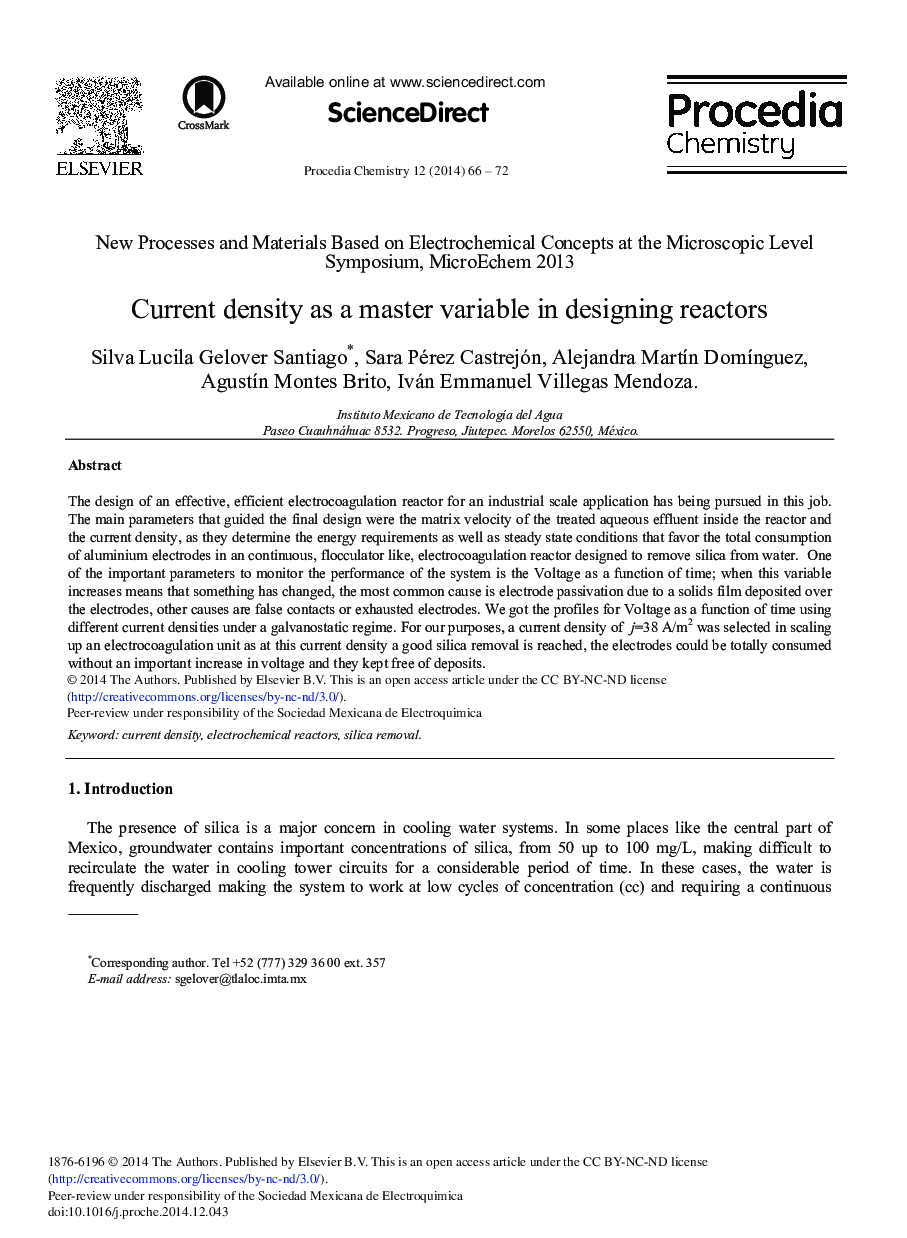| Article ID | Journal | Published Year | Pages | File Type |
|---|---|---|---|---|
| 239752 | Procedia Chemistry | 2014 | 7 Pages |
The design of an effective, efficient electrocoagulation reactor for an industrial scale application has being pursued in this job. The main parameters that guided the final design were the matrix velocity of the treated aqueous effluent inside the reactor and the current density, as they determine the energy requirements as well as steady state conditions that favor the total consumption of aluminium electrodes in an continuous, flocculator like, electrocoagulation reactor designed to remove silica from water. One of the important parameters to monitor the performance of the system is the Voltage as a function of time; when this variable increases means that something has changed, the most common cause is electrode passivation due to a solids film deposited over the electrodes, other causes are false contacts or exhausted electrodes. We got the profiles for Voltage as a function of time using different current densities under a galvanostatic regime. For our purposes, a current density of j=38 A/m2 was selected in scaling up an electrocoagulation unit as at this current density a good silica removal is reached, the electrodes could be totally consumed without an important increase in voltage and they kept free of deposits.
